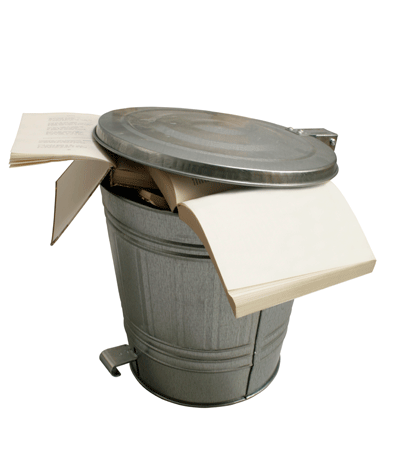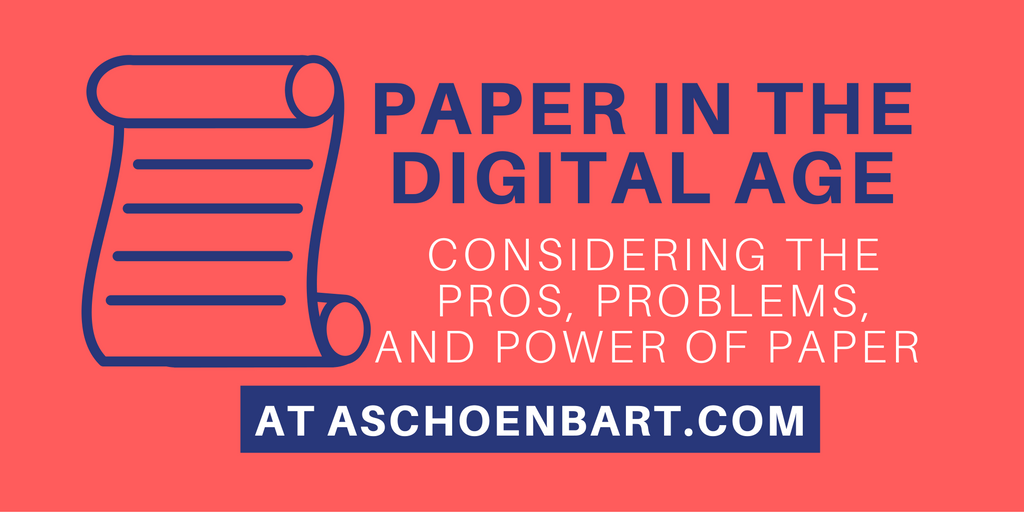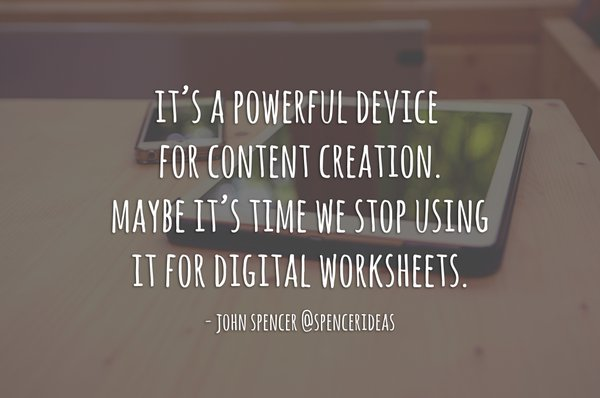Paper in the Digital Age: Considering the Pros, Problems, and Power of Paper


Do we need paper when all of our resources are online? That’s the question I asked my students last week. I wanted to know their thoughts about the use, reduction, or removal of paper in their education, and way their learning and understanding is impacted by the digital/paper divide.
While most of our school is incorporating technology and using Google Classroom to assign and collect work, paper is still king. In my English classroom, we are what I like to call paper-limited. Everything is always online--on Classroom and our web site--but when paper is more effective, we make copies, too.
For me, that means that I if I want students to interact with or annotate a text meaningfully, especially a longer text, I will always print hard copies. Our digital skills and tools simply aren’t developed enough to be as effective as a paper, pen, and highlighter for many students. Often, I’ll try to provide students with a range of options, such as online annotation tools along with hard copies.
Being paperless might be a buzzword in today’s educational technology sphere, but not using paper is not inherently a positive thing. It might save time, money, and some frustrating fights with copy machines, but it’s how the paper or lack of paper transforms learning and instruction that matters most.
This week, my students finished a major essay and spent time with self and peer evaluation and assessment. The essays were typed and editing in Google Docs, but for the editing, I printed hard copies of all of the work. I had a feeling that students’ editing and feedback would be more thorough, accurate, and effective by pen than by typed comments. And for the most part, I think I was right. Then, I asked students to reflect on the experience. Below, find some of their thoughts along with some of the research to back it up.
From BAM Radio Network

Students on Paper
My students responded to the prompt below in writing and discussion. Some replied on Google Classroom and others, fittingly, chose to use paper.
Tools and ideas to transform education. Sign up below.
In our mostly paperless classroom, we edited essay and gave feedback on hard copies for the first time this year. Most of you felt that this was more effective than online editing. Tell me more about your thoughts and experiences--should we do more on paper? Less digitally? Why? When? What is the value of paper or the hard copy in the paperless classroom?
- I feel like digital works when everybody in the classroom has access to technology and WiFi connection, because as most of the work is done in class, another big part is also in the comfort of our homes. I feel like paper is more effective for now as we better develop more efficient strategies to work digitally. I feel like there is a place and time where technology is the perfect tool. Like when we did our essays, Google classroom, short responses, or any writing content. But we also can't excessively do everything there because some things are better off on paper, like grading, the books we read, articles, some assignment and etc. Overall technology is a great way for learning to be more efficient used in the right way because it quick, fast, efficient, and easy to access and organize
- I feel like paper makes it easier to give quick feedback or comments on a writing like the essays or also when we are annotating texts. I also think that I better memorize things a hand write than things I type. On the other hand I believe that in class discussions I participate more when they are digital.
- I feel like since we wrote our papers online, editing on paper worked better because we could see them in a different way. I feel like we should continue to stay digital but if we're asked to evaluate something, paper is much easier.
- We should do more on paper. Studies have shown there is more retention and understanding when students work with hard copies of assignments. We should use it [paper] for editing, reading, and annotating. The value of paper is to make learning more personal and to improve lesson related cognition.
- I believe that we should keep things how we do right now. We should stick to digital but occasionally go back to writing on paper. We should do this because I feel it’s much easier.
- We should do more on paper because I remember things better.
- I prefer paper over Classroom though at home Classroom is often easier. I did this on paper. Which I guess helps my point.
A few of my students mentioned research on these questions, and that piqued my interest.
In Digital vs. Print: Reading Comprehension and the Future of the Book, M. Julee Tanner discusses research about comprehension and metacognition with print and digital texts. The author describes research that shows the following conclusions:
- A large preference for print texts over digital
- The distractions from embedded links and clickable text can inhibit comprehension of digital texts
- Computer screens are not conducive to reading longer academic texts.
- Readers of print texts can better predict their levels of comprehension than those of digital texts
Are you paperless? Paper-limited? Paper-full? Why? What’s the role of paper in your classroom and students’ learning? Share your thoughts in the comments or on Twitter @MrSchoenbart.
cross posted at www.aschoenbart.com
Adam Schoenbart is a high school English teacher, Google Education Trainer, and EdD candidate in Educational Leadership. He teaches grades 10-12 in a 1:1 Chromebook classroom at Ossining High School in Westchester County, NY and received the 2014 LHRIC Teacher Pioneer Award for innovative uses of technology that change teaching and learning. Read more at The SchoenBlog and connect on Twitter @MrSchoenbart.
